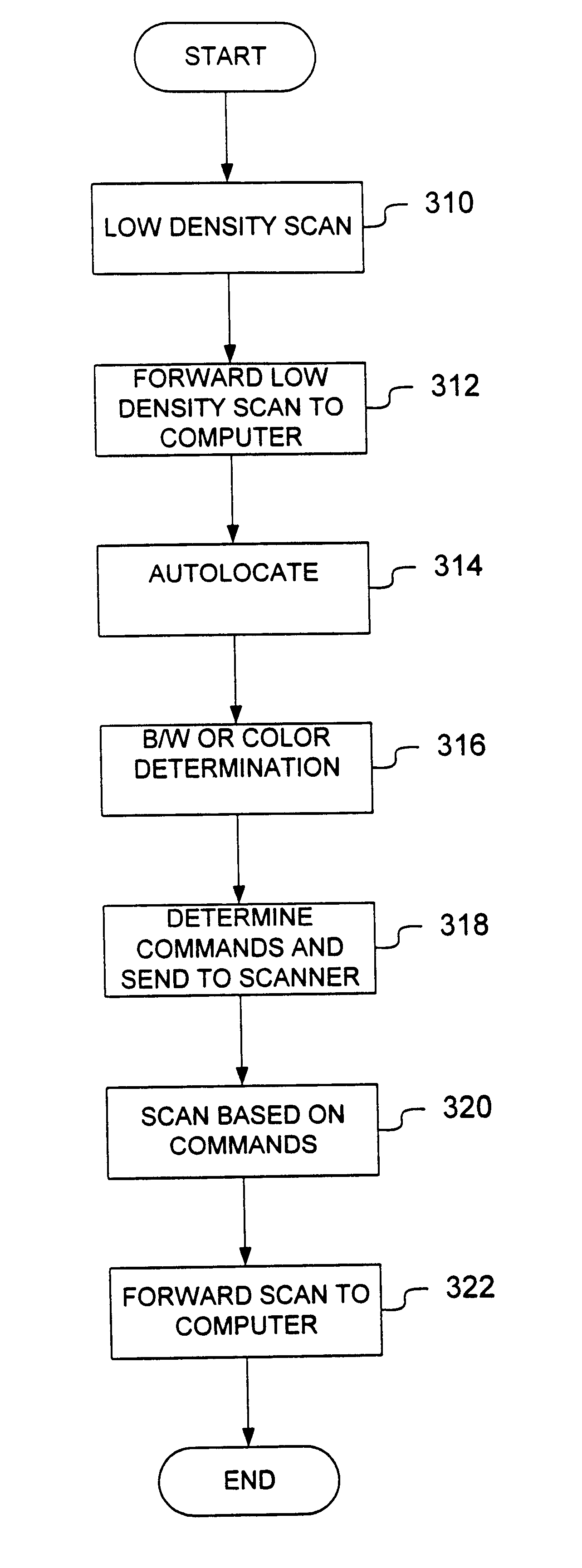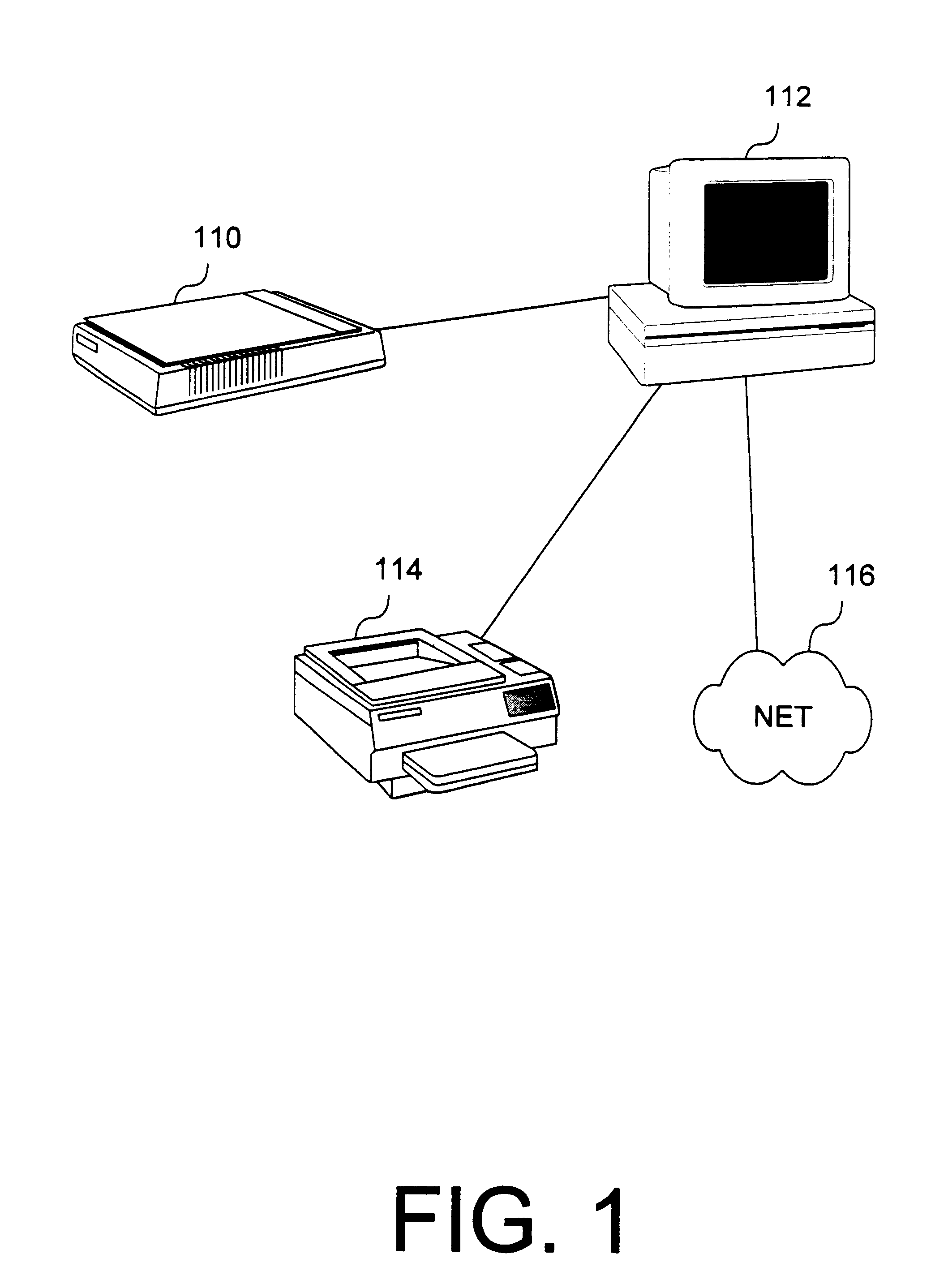Apparatus and method for determining an area encompassing an image for scanning the image
a technology of image scanning and apparatus, applied in the field of image location, can solve the problems of inaccurate techniques, affecting the size of the scanned area, and affecting the amount of data from the scan
- Summary
- Abstract
- Description
- Claims
- Application Information
AI Technical Summary
Benefits of technology
Problems solved by technology
Method used
Image
Examples
Embodiment Construction
Reference will now be made in detail to systems and methods consistent with the claimed invention that are illustrated in the accompanying drawings. Wherever possible, the same reference numbers will be used throughout the drawings to refer to the same or like parts.
FIG. 1 is a block diagram of a system capable of performing the methods and apparatus consistent with this invention. In FIG. 1, scanner 110 converts images into data, and transmits the data to computer 112. Computer 112 processes the data and may send the image data to different destinations, such as the display of computer 112, printer 114, or network 116. Preferably scanner 110 is an EPSON scanner, although other scanners may be used.
Consistent with this invention, scanner 110 first performs a low resolution scan across the entire scanner bed and sends the data to computer 112 for further processing. Computer 112 processes the low resolution data to look for particular characteristics, and sends commands to scanner 11...
PUM
 Login to View More
Login to View More Abstract
Description
Claims
Application Information
 Login to View More
Login to View More - R&D
- Intellectual Property
- Life Sciences
- Materials
- Tech Scout
- Unparalleled Data Quality
- Higher Quality Content
- 60% Fewer Hallucinations
Browse by: Latest US Patents, China's latest patents, Technical Efficacy Thesaurus, Application Domain, Technology Topic, Popular Technical Reports.
© 2025 PatSnap. All rights reserved.Legal|Privacy policy|Modern Slavery Act Transparency Statement|Sitemap|About US| Contact US: help@patsnap.com



